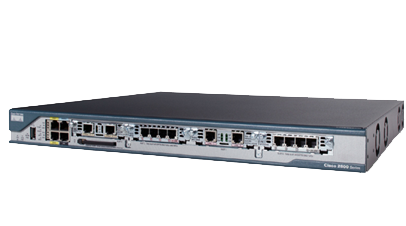AnycastWikipedia: Anycast is a network addressing and routing methodology in which a single IP address is shared by devices (generally servers) in multiple locations. Routers direct packets addressed to this destinatio..., at a very basic level, is when a collection of servers share the same IP address and data is sent from a source computer to the server that is topographically closest. It is important to remember that topographically closer does not inherently mean geographically closer, though this is often the case.
Anycast is used primarily for load balancingWikipedia: In computing, load balancing is the process of distributing a set of tasks over a set of resources (computing units) with the aim of making their overall processing more efficient. Load balancing can ... to allow the server topographically closest to a user to handle their request. This helps cut down on latency and bandwidth costs and improves load time for users.
Anycast is linked with the Border Gateway ProtocolWikipedia: Border Gateway Protocol (BGP) is a standardized exterior gateway protocol designed to exchange routing and reachability information among autonomous systems (AS) on the Internet.[2] BGP is classified .... This is a protocol used between routersWikipedia: A router[a] is a computer and networking device that forwards data packets between computer networks, including internetworks such as the global Internet.[2][3][4] on the Internet with the intent of ensuring that all of a router’s neighbours are aware of the networks that can be reached through that router and the topographical distance to those networks. The principal of Anycast is that a single IP address is advertised in the BGP messages of multiple routers. As this propagates across the Internet, routers become aware of which of their neighbours provides the short topographical path to the advertised IP address.
IP addresses used in Anycast are often purchased directly from a Regional Internet registryWikipedia: A regional Internet registry (RIR) is an organization that manages the allocation and registration of Internet number resources within a region of the world. Internet number resources include IP addre.... Some data centersWikipedia: A data center is a facility used to house computer systems and associated components, such as telecommunications and storage systems.[1][2] are known to rent IP addresses to customers and allow them to be advertised by other data centres.
As with all routing, it cannot be guaranteed that a packet will take the same path across the Internet as its predecessor. With Anycast, it cannot be guaranteed that a packet will reach the same destination server as its predecessor. As such, Anycast is not suitable for protocols which track state. TCP is an example of one of these. UDP, however, is perfect for Anycast providing it does not try to track state at a higher level of the OSI model and that the application layer protocol does not rely on a large number of fragemented datagrams to transfer data.
The typical scenario for Anycast as a load balancer is thus:
- A server in London has its own IP address 3.3.3.3 and a shared Anycast IP address 1.1.1.1.
- A server in New York has its own IP address 4.4.4.4 and a shared Anycast IP address 1.1.1.1.
- Each of the above servers runs a DNSWikipedia: The Domain Name System (DNS) is a hierarchical and distributed name service that provides a naming system for computers, services, and other resources on the Internet or other Internet Protocol (IP) n... server listening on 1.1.1.1.
- The DNS servers serve up an A record for anycastdomain.com. London would serve up 3.3.3.3 and New York would serve up 4.4.4.4.
- When a DNS request is made for anycastdomain.com, Anycast would route this request to its topographically closest DNS server. This DNS server would, in turn, serve up the unique IP address of its own server and a TCP connection would be established over standard unicast.
Feedback from companies such as ScaleEngine is that it’s quite difficult to persuade data centres to add IP addresses to their BGP. This appears to be best suited to larger organisations who lease their own transitWikipedia: Internet transit is the service of allowing network traffic to cross or "transit" a computer network, usually used to connect a smaller Internet service provider (ISP) to the larger Internet. Technica... and have BGP agreements with their transit providers.

Good Article. Helped to understand the basics
Thank you! It really helped a lot!